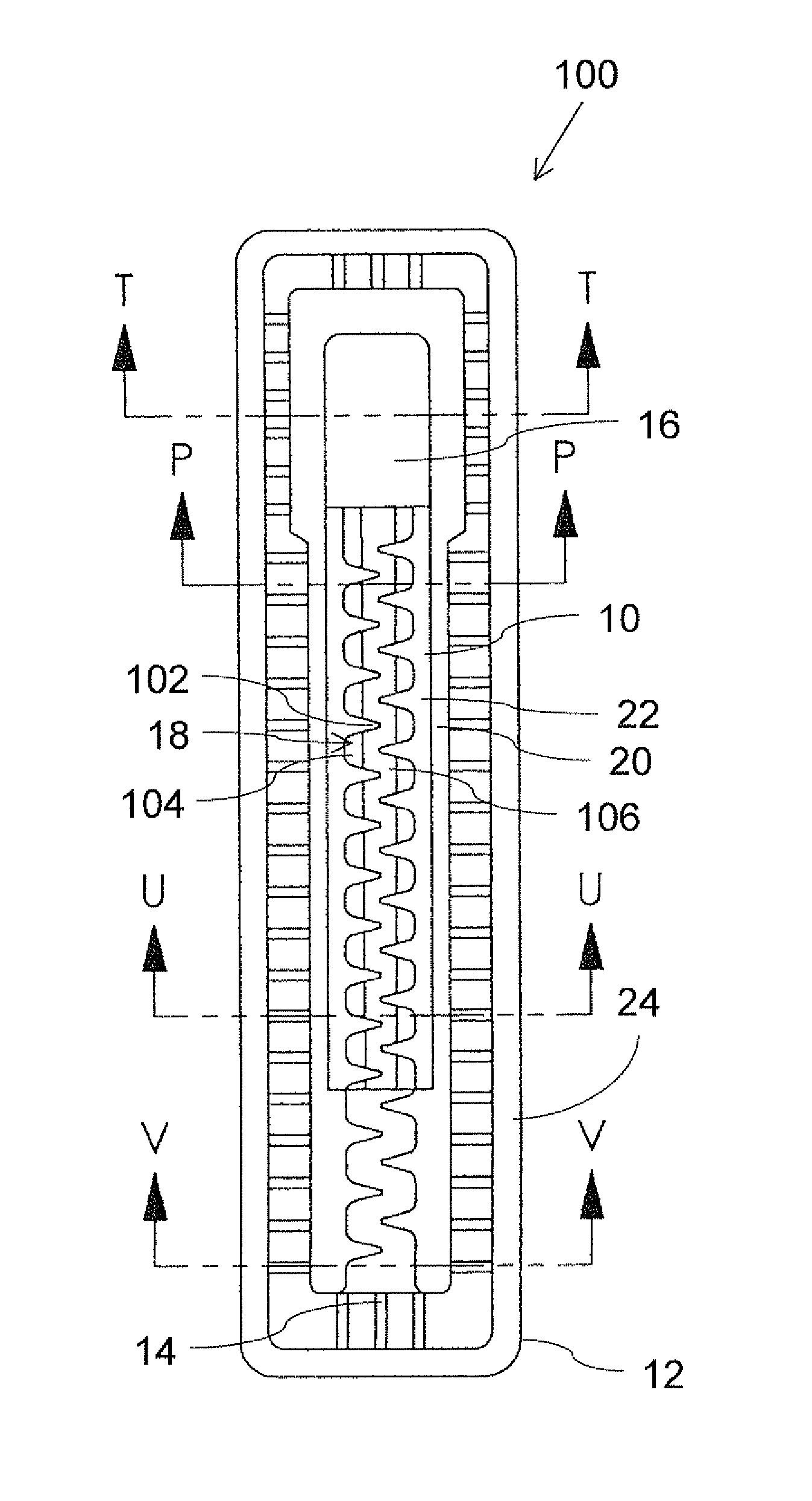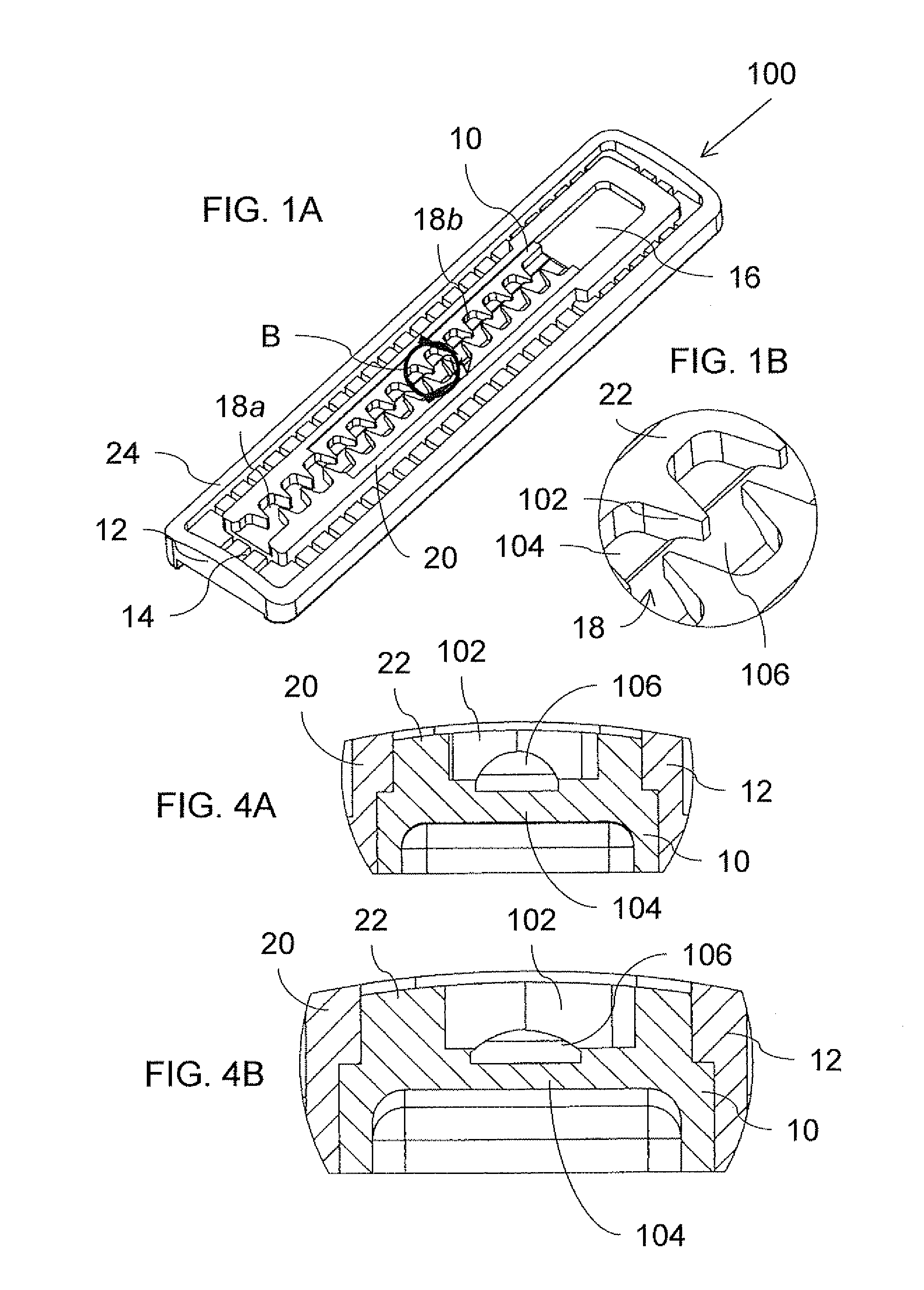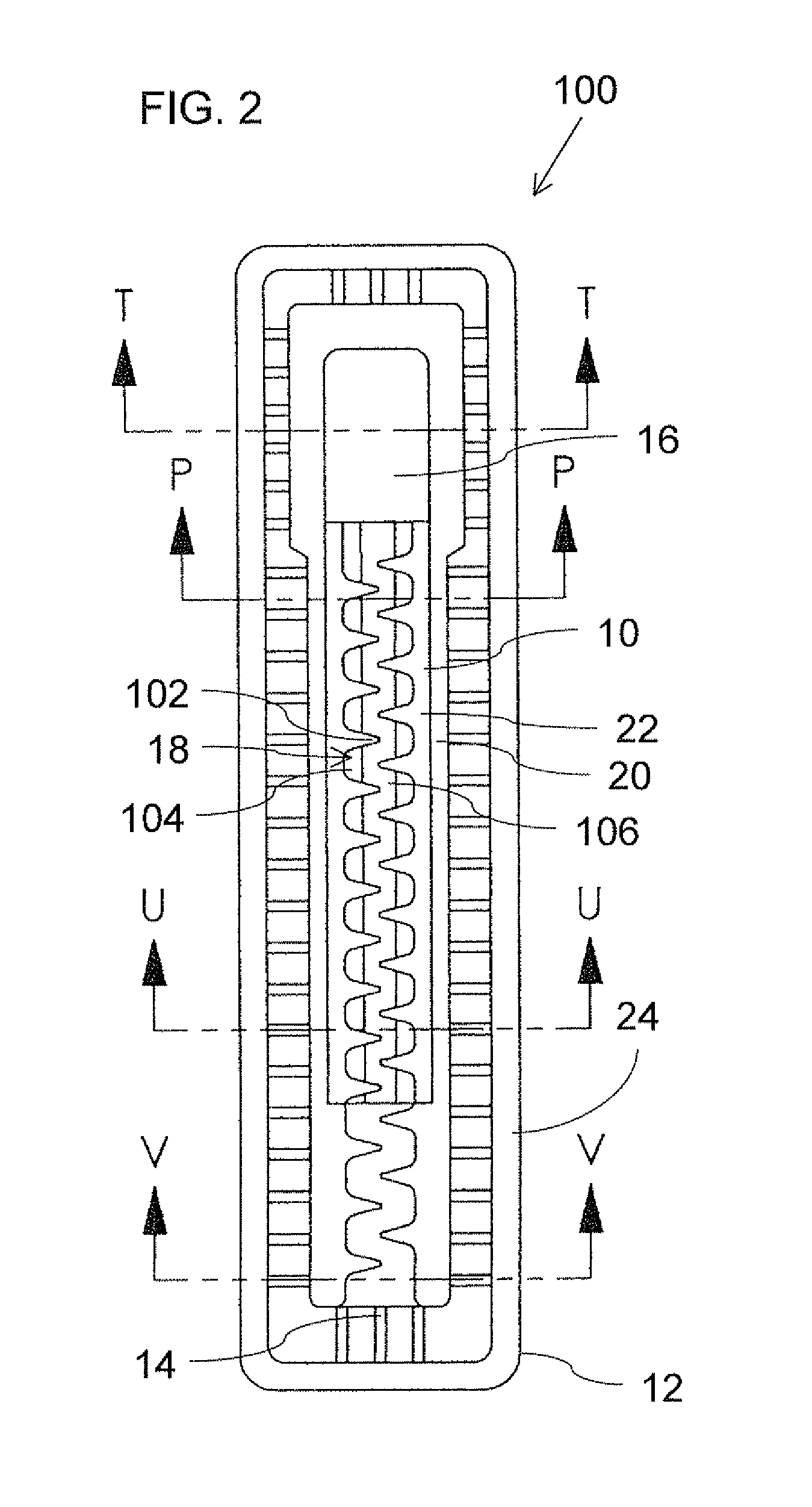Bi-component drip emitter
a technology of drip emitter and component, which is applied in the field of drip emitters, can solve the problems of limiting the range of shapes that can be produced, increasing production costs, and requiring a relatively large proportion of elastomer materials
- Summary
- Abstract
- Description
- Claims
- Application Information
AI Technical Summary
Problems solved by technology
Method used
Image
Examples
first embodiment
[0082]Referring now to the drawings, FIGS. 1A-5D show a drip emitter, generally designated 100, constructed and operative according to the present invention. Drip emitter 100 is of a type for attachment to an inner surface of a wall of an irrigation hose around less than half of the periphery of the irrigation hose at spaced apart locations along the irrigation hose, as will be illustrated specifically with reference to FIGS. 5A-5D.
[0083]As described in general terms above, drip emitter 100 includes an elastomer component 10 and a rigid polymer component 12, and is configured such that, when welded to the inner surface of the irrigation hose, drip emitter 100 defines a water inlet 14 for receiving water from the irrigation hose, a drip outlet 16 for releasing water through the wall of the irrigation hose, and a fluid flow pathway from the water inlet to the drip outlet. In the embodiment illustrated here, the fluid flow pathway is formed with a flow restriction implemented as a laby...
second embodiment
[0095]Referring now to FIGS. 6A-7C, these show a drip emitter, generally designated 200, constructed and operative according to the present invention. Generally speaking, drip emitter 200 is similar to drip emitter 100 described above, with equivalent elements being similarly labeled. Drip emitter 200 differs from drip emitter 100 primarily in that the under-tooth bypass spaces are here replaced by an over-tooth bypass clearances.
[0096]Thus, in the embodiment illustrated here, fluid flow pathway 18a, 18b is formed with a flow restriction implemented as a labyrinth formed by a sequence of baffles 202 and a base 204. At least part of the sequence of baffles 202 and base 204 corresponding to the variable geometry flow path 18b is integrally formed as part of the elastomer component 10.
[0097]Elastomer component 10 here also includes a series of bypass clearances 206 formed along the top edges of the sequence of baffles 202 such that, when welded to the inner surface of the irrigation ho...
third embodiment
[0101]Referring now to FIGS. 8A-8E, these show a drip emitter, generally designated 300, constructed and operative according to the present invention. Generally speaking, drip emitter 300 is similar to drip emitter 100 described above, with similar elements being similarly labeled. Drip emitter 300 differs from drip emitter 100 primarily in that it employs a labyrinth flow restriction with a variable cross-section flow geometry instead of the aforementioned under-tooth bypass spaces. This embodiment also illustrates an implementation in which both the fixed geometry labyrinth part of the flow path 18a and the variable geometry flow path 18b are integrally formed as part of the elastomer component 10.
[0102]Thus, in the embodiment illustrated here, fluid flow pathway 18a, 18b is formed with a flow restriction implemented as a labyrinth formed by a sequence of baffles 302 and a base 304. At least part of the sequence of baffles 302 and base 304, and in this case the entirety of the seq...
PUM
| Property | Measurement | Unit |
|---|---|---|
| pressure | aaaaa | aaaaa |
| length | aaaaa | aaaaa |
| flow rate | aaaaa | aaaaa |
Abstract
Description
Claims
Application Information
 Login to View More
Login to View More - R&D
- Intellectual Property
- Life Sciences
- Materials
- Tech Scout
- Unparalleled Data Quality
- Higher Quality Content
- 60% Fewer Hallucinations
Browse by: Latest US Patents, China's latest patents, Technical Efficacy Thesaurus, Application Domain, Technology Topic, Popular Technical Reports.
© 2025 PatSnap. All rights reserved.Legal|Privacy policy|Modern Slavery Act Transparency Statement|Sitemap|About US| Contact US: help@patsnap.com



